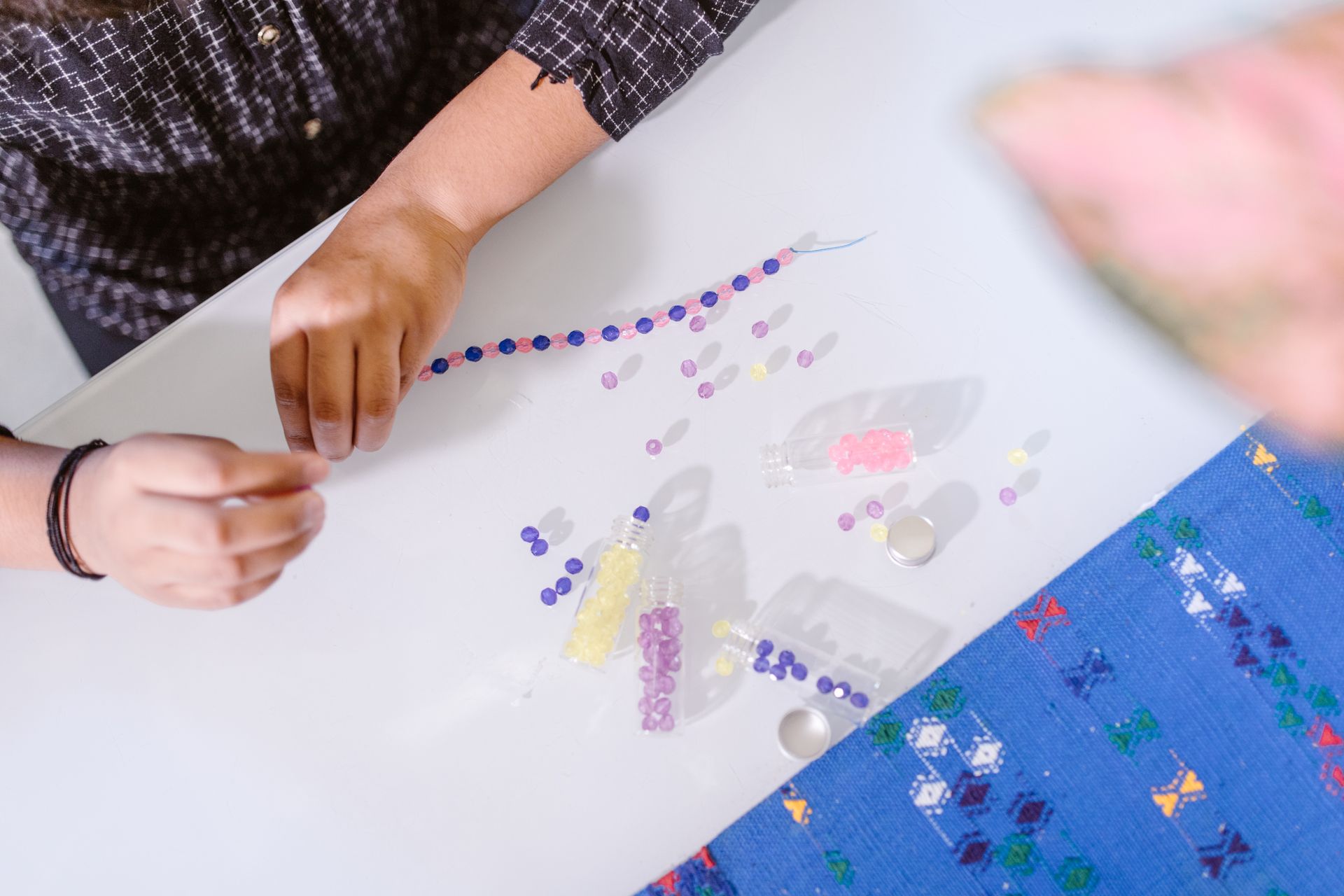Ultimate Guide: Transitioning Your Child From Home to Daycare/Nursery
Ultimate Guide: Transitioning Your Child From Home to Daycare/Nursery

Transitioning your child from home to daycare or nursery is a significant milestone for both parents and children. This guide aims to provide comprehensive support to ensure a smooth and positive experience. Whether you're a parent preparing for your child's first day or an early years educator helping families through this transition, you'll find valuable tips and strategies here.
Understanding the Transition
Emotional Impact on the Child
Children may experience a range of emotions, including excitement, anxiety, and fear. Understanding these feelings helps in addressing their needs effectively.
Emotional Impact on the Parents
Parents often feel anxious or guilty about leaving their child. Acknowledging these emotions and seeking support can make the process easier.
Common Challenges
Common challenges include separation anxiety, adjusting to new routines, and building trust with caregivers.
Choosing the Right Daycare/Nursery
Research and Visits
Thorough research and visiting potential daycare centres are crucial. Pay attention to the environment, staff interactions, and facilities.
Key Factors to Consider
Consider location, curriculum, staff qualifications, and the centre's philosophy. Ensure it aligns with your family's values and needs.
Checking Reviews and References
Read reviews and ask for references. Talking to other parents can provide insights into the centre's strengths and weaknesses.
Questions to Ask
Ask about staff turnover, child-to-staff ratios, daily routines, and policies on discipline and health. Clear communication helps in making an informed decision.
Preparing Your Child for the Transition
Gradual Introduction
Introduce your child to the new environment gradually. Short visits before the actual start date can help them acclimate.
Discussing the Upcoming Change
Talk to your child about what to expect. Use positive language to create excitement and reduce anxiety.
Reading Books About Daycare/Nursery
Books about daycare or nursery can help children understand and visualise the experience.
Practice Separation
Practice leaving your child with a trusted caregiver for short periods to help them get used to the idea of separation.
Establishing a Routine
Importance of a Consistent Schedule
Consistency helps children feel secure. Establishing a routine for mornings and evenings can ease the transition.
Morning Routines
Create a predictable morning routine that includes time for breakfast, dressing, and some play. This sets a positive tone for the day.
Evening Routines
Evening routines should include a wind-down period, dinner, bath, and bedtime. Consistency helps children adjust to new schedules.
Preparing for Drop-Off and Pick-Up Times
Discuss and practice the drop-off and pick-up process. Reassure your child that you will return at a specific time.
Separation Anxiety: What It Is and How to Manage It
Signs of Separation Anxiety
Signs include crying, clinging, and refusal to participate in activities. Understanding these signs helps in providing appropriate support.
Strategies to Ease Anxiety
Comfort items, short goodbyes, and positive reinforcement can help ease separation anxiety.
When to Seek Professional Help
If anxiety persists and affects your child's well-being, consider seeking advice from a child psychologist.
Creating a Comfort Kit
Items to Include
Include favourite toys, blankets, or family photos. These items provide comfort and a sense of familiarity.
Personalising the Kit
Personalise the kit with your child's favourite items to make them feel special and secure.
Encouraging Use of the Kit
Encourage your child to use the kit whenever they feel anxious or need comfort.
Communicating with Daycare/Nursery Staff
Importance of Open Communication
Open communication with staff ensures your child's needs are met and any concerns are addressed promptly.
Sharing Your Child's Needs and Preferences
Provide detailed information about your child's routines, likes, dislikes, and any special needs.
Regular Updates and Feedback
Regular updates from staff and providing feedback helps in maintaining a collaborative relationship.
Building a Partnership with Educators
Building a strong partnership with educators enhances your child's experience and ensures consistent care.
First Day Tips
What to Expect on the First Day
Expect some anxiety and emotional moments. Stay positive and calm to help your child feel secure.
How to Handle Goodbyes
Keep goodbyes short and reassuring. Remind your child that you will return soon.
Setting a Positive Tone
A positive attitude and encouragement can help your child feel excited about the new experience.
Ensuring a Smooth Start
Prepare everything the night before to avoid morning stress. Arrive early to give your child time to adjust.
Helping Your Child Adjust
Encouraging Socialisation
Encourage your child to make friends and participate in group activities. This helps in building social skills and confidence.
Building Relationships with Caregivers
Help your child build a bond with caregivers by talking positively about them and encouraging interactions.
Supporting Your Child at Home
Continue to support your child at home by discussing their day and addressing any concerns.
Recognising Signs of Adjustment
Look for signs of adjustment, such as less crying during drop-off and enthusiasm about attending daycare.
Dealing with Setbacks
Understanding Common Setbacks
Common setbacks include regression, reluctance to attend, and behavioural changes. Understanding these helps in addressing them effectively.
How to Respond Effectively
Respond with patience and consistency. Provide reassurance and support during setbacks.
Maintaining Patience and Consistency
Consistency in routines and responses helps your child feel secure and understand expectations.
Celebrating Small Successes
Celebrate small milestones and successes to encourage and motivate your child.
Health and Safety Considerations
Ensuring a Safe Environment
Ensure the daycare centre follows safety protocols and has childproofed areas.
Understanding Daycare/Nursery Health Policies
Understand the centres policies on illness, vaccinations, and emergency procedures.
Managing Illnesses and Medical Needs
Inform the staff about any medical conditions and provide necessary medications and instructions.
Communicating Health Concerns with Staff
Regularly communicate any health concerns or updates about your child's medical needs.
Encouraging Independence
Fostering Self-Help Skills
Encourage your child to practice self-help skills, such as dressing, eating, and toileting.
Encouraging Decision-Making
Allow your child to make simple decisions to build confidence and independence.
Balancing Support and Independence
Provide support while encouraging independence. This balance helps your child grow and develop self-reliance.
Recognising and Praising Independent Behaviour
Acknowledge and praise your child's efforts towards independence to reinforce positive behaviour.
Monitoring Progress
Tracking Emotional and Social Development
Monitor your child's emotional and social development through regular observations and discussions with caregivers.
Celebrating Milestones
Celebrate developmental milestones to encourage your child's growth and progress.
Adjusting Strategies as Needed
Be flexible and adjust strategies based on your child's needs and responses.
Communicating Progress with Educators
Regularly communicate with educators about your child's progress and any areas of concern.
Conclusion
Transitioning your child from home to daycare or nursery is a significant step. By understanding the emotional impact, preparing thoroughly, and maintaining open communication with caregivers, you can ensure a smooth and positive experience for your child. Remember to be patient, consistent, and supportive throughout the process.
FAQs
What if my child doesn’t adjust?
If your child struggles to adjust, consider seeking advice from the daycare staff or a child psychologist. Consistent routines and patience can also help ease the transition.
How long does the transition typically take?
The transition period varies for each child. Some may adjust within a few days, while others may take a few weeks.
What are some red flags to look out for in daycare/nursery?
Red flags include high staff turnover, lack of communication, poor hygiene, and unsafe environments. Trust your instincts and address concerns promptly.
How can I stay involved in my child’s daycare/nursery experience?
Stay involved by maintaining regular communication with staff, attending parent-teacher meetings, and participating in daycare events.
What should I do if I have concerns about the daycare/nursery?
Address concerns directly with the daycare management. Open communication and collaboration can help resolve issues effectively
GLOBAL KIDS DAY CARE LIMEHOUSE
Lascar Wharf Community Centre, Limehouse, London, E14 7FN. | Tel: 0207 001 1210 Email: limehouse@globalkidsdaycare.co.uk
GLOBAL KIDS DAY CARE MILE END
21 Burdett Road, Mile End, London, E3 4TU. | Tel: 0208 980 1706 Email: mile-end@globalkidsdaycare.co.uk
GLOBAL KIDS DAY CARE ALDGATE EAST
52 Old Castle Street, Aldgate East, London E1 7AJ. | Tel: 0203 302 7800 / Mobile: 07823 770035 | Email: aldgateeast@globalkidsdaycare.co.uk
Opening Times: 8am - 6pm

















